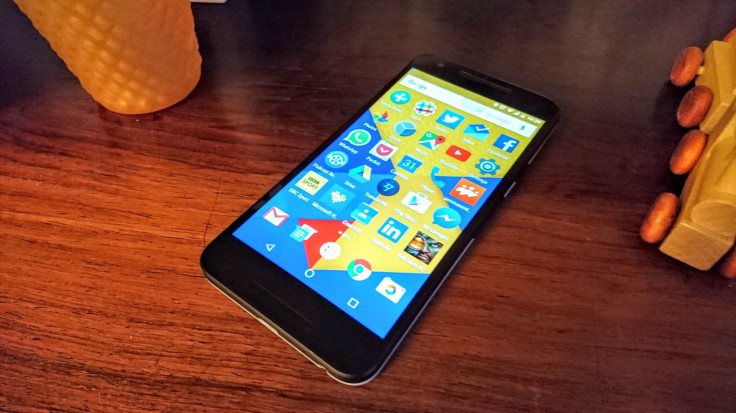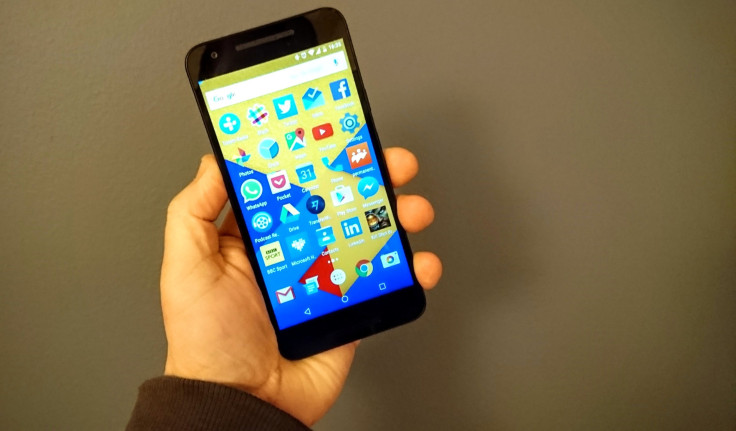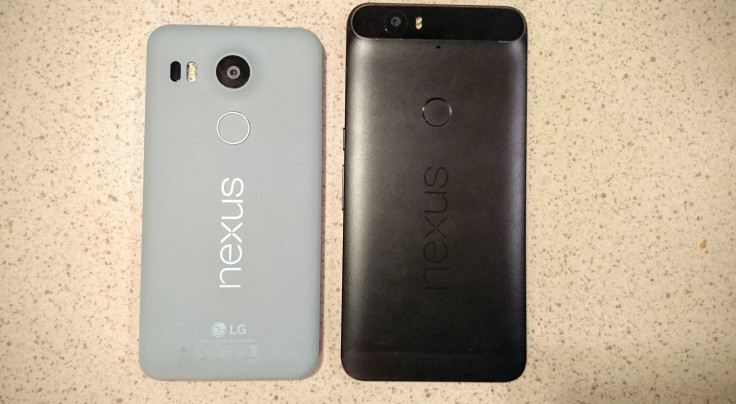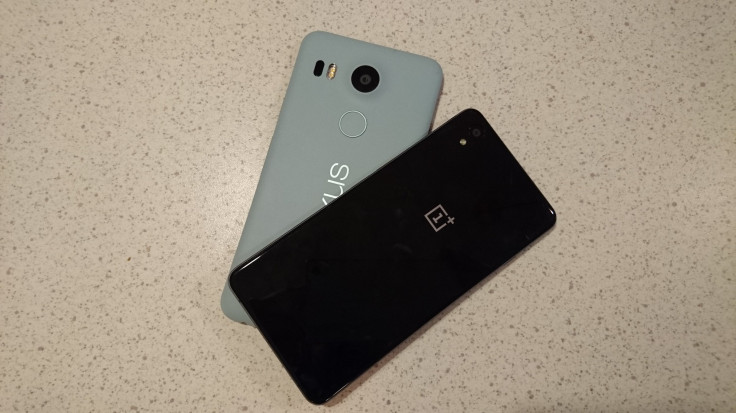Google Nexus 5X Review: LG's Mid-Range Smartphone Will Struggle To Compete In A Crowded Market

The first time I picked up the Nexus 5X, I was disappointed. I had been one of the many Nexus 5 users who back in 2013 was telling anyone who would listen that this was the best smartphone in the world, and I had been waiting with bated breath for the replacement to once again offer a combination of minimalist yet elegant design and a pure Android experience at a price I could afford. Built by LG for Google, the Nexus 5X also promised an upgraded camera, addressing the single biggest drawback of the original model.
Then I actually got one, and lived with it a while. My first disappointment initially was the design -- it was just ugly compared to its predecessor. The bulbous camera enclosure on the rear broke the minimal clean lines, and the phone was so light I wondered if Google had forgot to put a battery in the device.
But having used the Nexus 5X now as my primary smartphone, I find that a lot of the early problems I had with the phone have disappeared, and what has shone through is the vastly improved battery, great performance, the benefits the latest version of Android brings with it and of course the budget price of $379.
The Nexus 5X is the little brother to the Nexus 6P, which is the flagship Android Marshmallow device for 2015 and with its 5.7-inch Quad HD display and slim, metallic construction goes toe-to-toe with the likes of the iPhone 6S Plus, Galaxy Note 5 and LG G4. The 5X, on the other hand, features a (relatively) small 5.2-inch screen and the more typical Nexus plastic construction.
Design: A Weak Point
The design of the phone for me is the weakest point. Where the original felt more premium than its price suggested, the opposite is true for the Nexus 5X. Its slightly glossy finish on the rear cover is a little tacky, and that camera enclosure is still an issue for me. The phone is available in three rear covers (white, black and turquoise) but the front is always black, and that makes the white and turquoise options look a little mismatched.

I got used to the lightness (the Nexus 5X is just 136g compared to the 4.7-inch iPhone 6S at 143g), and the phone is very neat and compact, making it easy to store in your pocket without constantly being aware that it is there. The construction overall is good, but the volume and screen lock buttons do feel a little flimsy. Of course you can't compare this to the iPhone 6S in terms of construction and materials used (Apple's smartphone costs over $250 more) but compared to the OnePlus X, which costs $130 less, it doesn't stand up.
The mid-range Android market has become incredibly competitive since the original Nexus 5 launched two years ago, and LG's new model is going to struggle to compete purely in terms of design and the quality of materials.
Toned-Down Display
Where it can go toe to toe with the rest of the competition is its screen. I went straight from using the Nexus 6P and its 5.7-inch Quad HD AMOLED display to using the 5.2-inch Full HD LCD display on the Nexus 5X, and the change was jarring. Where the AMOLED display assaults the eyes with oversaturated, bright, popping colors, the Nexus 5X is a much more toned-down display, and while initially it looked washed-out, once my eyes adjusted, I found the display was excellent. It is bright, color reproduction is natural and viewing angles are great. While the resolution cannot compete with the likes of the Nexus 6P, LG G4 or Galaxy S6, I would challenge anyone who says that they would notice a significant difference.

The added benefit of a lower resolution display is the fact that the performance will also improve. The Nexus 5X uses a Snapdragon 808 chip from Qualcomm, which is admittedly a tier-two chip, but any lack of power was not noticeable. The only time I really struggled was when streaming music to a Bluetooth speaker while playing a graphically intensive game like "Kill Shot Bravo," and then it was a blip rather than an all-out crash. Wi-Fi and Bluetooth performance were both also excellent, connecting quickly and never dropping signal during my testing.
While the Nexus 5X may be nominally the budget Marshmallow device, it shares two key pieces of hardware with the Nexus 6P -- the fingerprint sensor and the camera.
Fingerprint Sensor And Camera
Just like the 6P, the fingerprint sensor here is located in the middle of the rear cover, just below the camera. While it may look odd, it is perfectly located for your index finger when you pick up the phone, and considering the Nexus 5X is a lot smaller than the 6P, I didn't have to stretch to reach it. The sensor is incredibly fast and responsive, allow me unlock the phone instantly, even with the screen off. I even found a partial print would be recognized and as with the 6P, wet fingers were also recognized.

The sensor in conjunction with Android's Imprint feature will eventually allow you use your fingerprint to unlock apps and pay using Android Pay, but for me, considering how many times I unlock my phone everyday, it is still a huge advantage and a feature you don't get on many budget or mid-range smartphones.
As I said earlier, the camera on the original Nexus 5 (and indeed on every Nexus model pre-2015) was very poor and Google has clearly seen the writing on the wall and put a lot of effort into fixing that this time around. While Google hasn't officially said so, the rear camera on the Nexus 5X is identical to the Nexus 6P from what I can see.
You get a 12.3-megapixel sensor combined with a dual-tone LED flash and a laser auto-focus system. The sensor features larger 1.55 micron pixels to improve low-light performance, and considering the price of the Nexus 5X, the results are superb. Put this camera up against the likes of the iPhone 6S Plus, Galaxy Note 5 or LG G4 and it doesn't quite match up, but against the Moto X Pure Edition, OnePlus X or pretty much every other mid-range smartphone and it blows them out of the water.

In good lighting conditions, the images the camera produces are superb, and in low light, the camera still produces great shows. Images are well balanced and detailed; while the auto-focusing system is good, it's not quite as fast as Google would have you believe. For video you get 4K support if you want it, while on the front you get a 5-megapixel sensor (down from the 8mp sensor on the Nexus 6P) that still produces pretty great images. Another benefit brought across from the Nexus 6P is the ability to fast-launch the camera from locked by double pressing the power button on the side.
Marshmallow
Of course one of the constant benefits of buying a Nexus device is getting access to the latest version of Android, and as we have seen from Google in the last few years, Android continues to mature with a refined interface which is more intuitive, responsive and well-designed. Google Now is central to this design and the Now on Tap feature, which gives you contextual search results depending on what you are looking at, is a neat addition, though still in its early stages. Voice search is also integrated and you can activate it even when the phone is locked by saying "OK Google" -- oddly this feature is not turned on by default so you will need to dive into the settings to activate it.

Another feature of Android 6.0 or Marshmallow is not one you will notice immediately, but is hugely important. Doze is designed to save battery life by putting your phone to sleep when the screen is off (you still get priority notifications), and thankfully this is turned on by default. Considering the Nexus 5X has a relatively small 2,700mAh battery, Doze certainly helps get you through the day. You will need to charge the phone at the end of every day, and if you are using it intensively (hotspot, streaming video and music, push email, etc) then you will struggle to get a whole day out of it.
Like the Nexus 6P, the Nexus 5X uses the increasingly popular USB-C port for data transfer and charging. It uses a proprietary fast-charging technology to get up to seven hours' use from a 10-minute charge. I found this claim to be slightly exaggerated, but the fast-charging tech does work -- though only with the supplied cable and adapter (using the OnePlus 2 charging cable didn't allow for fast charging).
Should I Buy The Nexus 5X?
The Nexus 5X is available without a contract from Google for $379 but for that price, you only get 16GB of storage and no microSD card to expand storage. The only other option is a 32GB model costing $429, again with no expansion option. Even considering the wide variety of cloud storage and streaming solutions available today, 16GB is just too limiting. That said, at $429 for the 32GB model, you are still getting a pretty good deal.
It should be noted, however, that of the 32GB storage in my review unit, just 24.9GB was user-accessible, suggesting Android 6.0 takes up over 7GB of your storage, which on a 16GB model would be a major issue.
As the U.S. smartphone market moves slowly away from subsidized phones, more and more people are going to be looking at smartphones like the Nexus 5X that don't cost more than $600 to buy outright. At the moment the best value available is from the OnePlus X at $249, and while this phone also has just 16GB internal storage, it also has a microSD card to allow you easily (and cheaply) expand your storage. But the OnePlus X does lack a fingerprint sensor and can't compete with the 5X's camera.

In sum, Google has addressed the major shortcoming of the Nexus 5 by giving the Nexus 5X a great camera, but the cheap design and material negate this improvement somewhat. A lack of expandable storage is also an issue, particularly on the 16GB model, but the Nexus 5X still offers good performance, the best Android experience, a great screen along with the great camera -- and all at a great price.
If you can get over the design and memory issues and want a very good smartphone at nearly half the price of an iPhone, then this could be the smartphone for you.
© Copyright IBTimes 2024. All rights reserved.






















